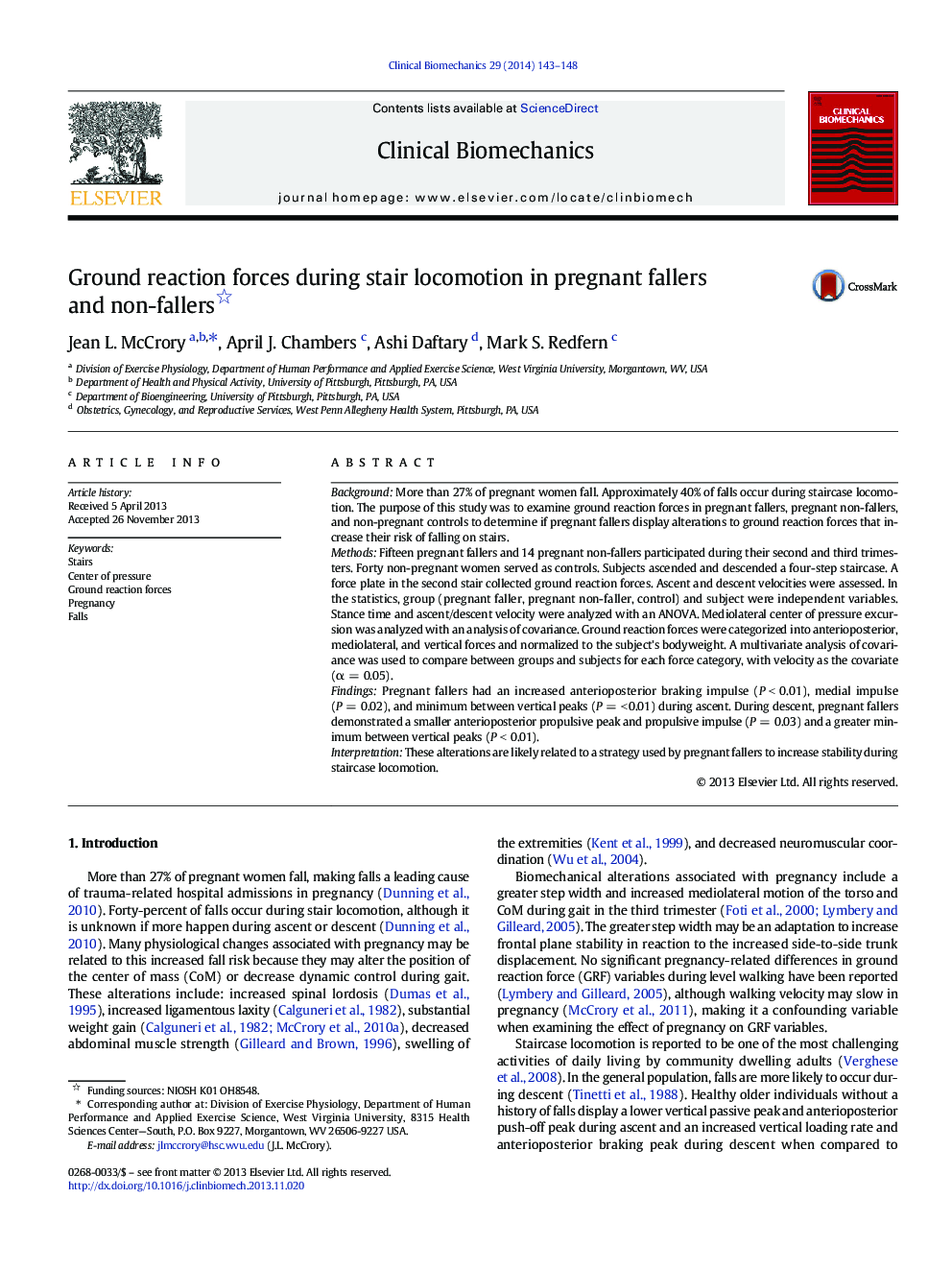| Article ID | Journal | Published Year | Pages | File Type |
|---|---|---|---|---|
| 6205013 | Clinical Biomechanics | 2014 | 6 Pages |
BackgroundMore than 27% of pregnant women fall. Approximately 40% of falls occur during staircase locomotion. The purpose of this study was to examine ground reaction forces in pregnant fallers, pregnant non-fallers, and non-pregnant controls to determine if pregnant fallers display alterations to ground reaction forces that increase their risk of falling on stairs.MethodsFifteen pregnant fallers and 14 pregnant non-fallers participated during their second and third trimesters. Forty non-pregnant women served as controls. Subjects ascended and descended a four-step staircase. A force plate in the second stair collected ground reaction forces. Ascent and descent velocities were assessed. In the statistics, group (pregnant faller, pregnant non-faller, control) and subject were independent variables. Stance time and ascent/descent velocity were analyzed with an ANOVA. Mediolateral center of pressure excursion was analyzed with an analysis of covariance. Ground reaction forces were categorized into anterioposterior, mediolateral, and vertical forces and normalized to the subject's bodyweight. A multivariate analysis of covariance was used to compare between groups and subjects for each force category, with velocity as the covariate (α = 0.05).FindingsPregnant fallers had an increased anterioposterior braking impulse (P < 0.01), medial impulse (P = 0.02), and minimum between vertical peaks (P = < 0.01) during ascent. During descent, pregnant fallers demonstrated a smaller anterioposterior propulsive peak and propulsive impulse (P = 0.03) and a greater minimum between vertical peaks (P < 0.01).InterpretationThese alterations are likely related to a strategy used by pregnant fallers to increase stability during staircase locomotion.
